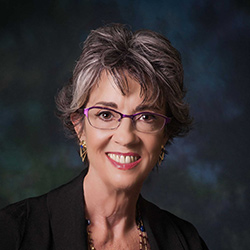By Robyn Stone
Robyn Stone imagines a perfect world in which housing options abound and integration of housing and health is commonplace.
A few weeks ago, a colleague asked me to identify the issue that’s most on my mind these days. What are my biggest concerns? And what solutions could help relieve those concerns?
It wasn’t hard to identify the topic. But the solutions were another story.
In short, I’m thinking about housing. And I’m stumped.
I’m wondering how we can possibly devise policies that address the growing need for long-term services and supports among older adults when we don’t have a housing policy that addresses the need to provide all Americans with viable housing options throughout their lifespans.
And I’m asking lots of questions:
Are we moving toward a home-based care system that only works for older adults who own their homes outright and have money to carry out the modifications they need to stay in those homes?
Is the evolving shift to home-based care consistent with a housing policy that fails to ensure that all Americans have access to decent and safe housing?
How can we develop policies that give all people, but especially those with limited resources, enough housing options to support them from the beginning to the end of life?
We need to answer these and other questions before we will have any hope of fostering successful aging in community. We also need to take steps to integrate housing and health so older people can function well in that community. Despite some recent steps forward, I’m sorry to report that our ability to carry out this integration is still extremely limited.
Why is this? Part of the challenge is that we have never taken an integrated approach to providing housing and health services to our citizens. We have two behemoth agencies—HUD and CMS—that each focus on their own piece of the pie but rarely talk with one another, although they are having more conversations now than they have in the past.
Our lack of integration is also evident on Capitol Hill, where separate congressional committees address housing and health policy but rarely work together. It’s not surprising that we don’t have a clear path forward.
I do have a dream for housing policy, even if I’m unsure about how to get there.
In my perfect world, we’d recognize how silly it is to think you can provide home-based services and supports without guaranteeing that care recipients have a decent and safe home in which to receive those services.
In my perfect world, every American would have access to a variety of affordable housing options. You’d be free to choose the option that best fit your stage in life, and it would be easy to transition from one housing option to another as life circumstances and functional abilities changed. Across-the-board affordability would open these options to all people, regardless of income level.
In my perfect world, having a wide variety of housing choices within one geographic area would mean you could make a housing transition without leaving the community where you had spent your life, where you had friends and family, and to which you were committed.
In my perfect world, we’d get rid of the stigma currently associated with renting. We’d no longer view homeownership as the only path to achieving the American Dream. And our housing policies would reflect that shift in thinking.
In my perfect world, we’d view all our housing options as potential platforms for delivering needed services and supports that would help residents remain healthy and allow them to live independently for as long as possible.
This is what’s on my mind these days. I don’t have the answers. But I’m convinced that it’s high time we all started asking the questions—and taking steps to make our perfect world a reality.

Robyn I. Stone, DrPH, is senior vice president of research at LeadingAge, and co-director of the LeadingAge LTSS Center @UMass Boston. Her widely published work addresses long-term care policy and quality, chronic care for people with disabilities, the aging services workforce, affordable senior housing, and family caregiving.
